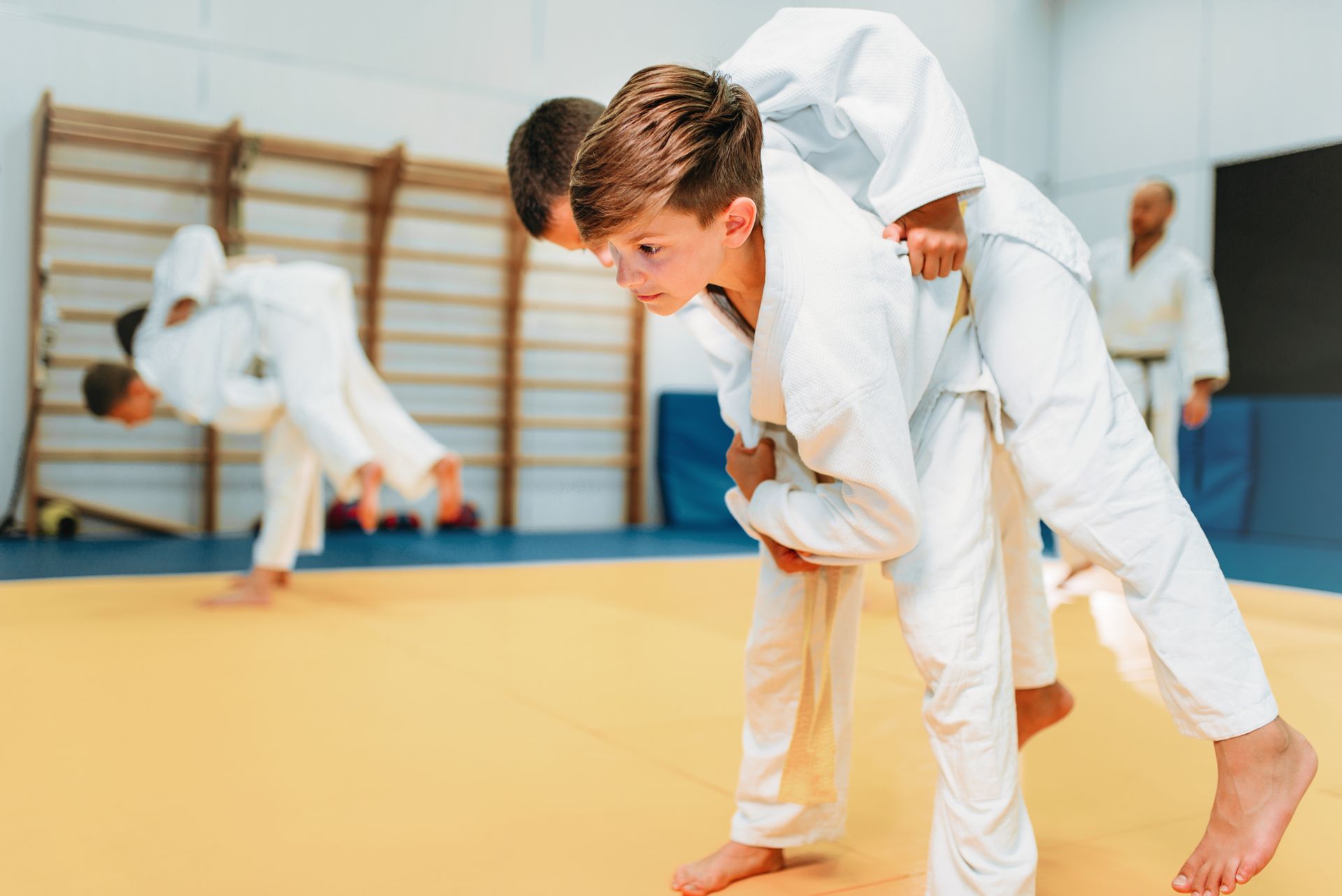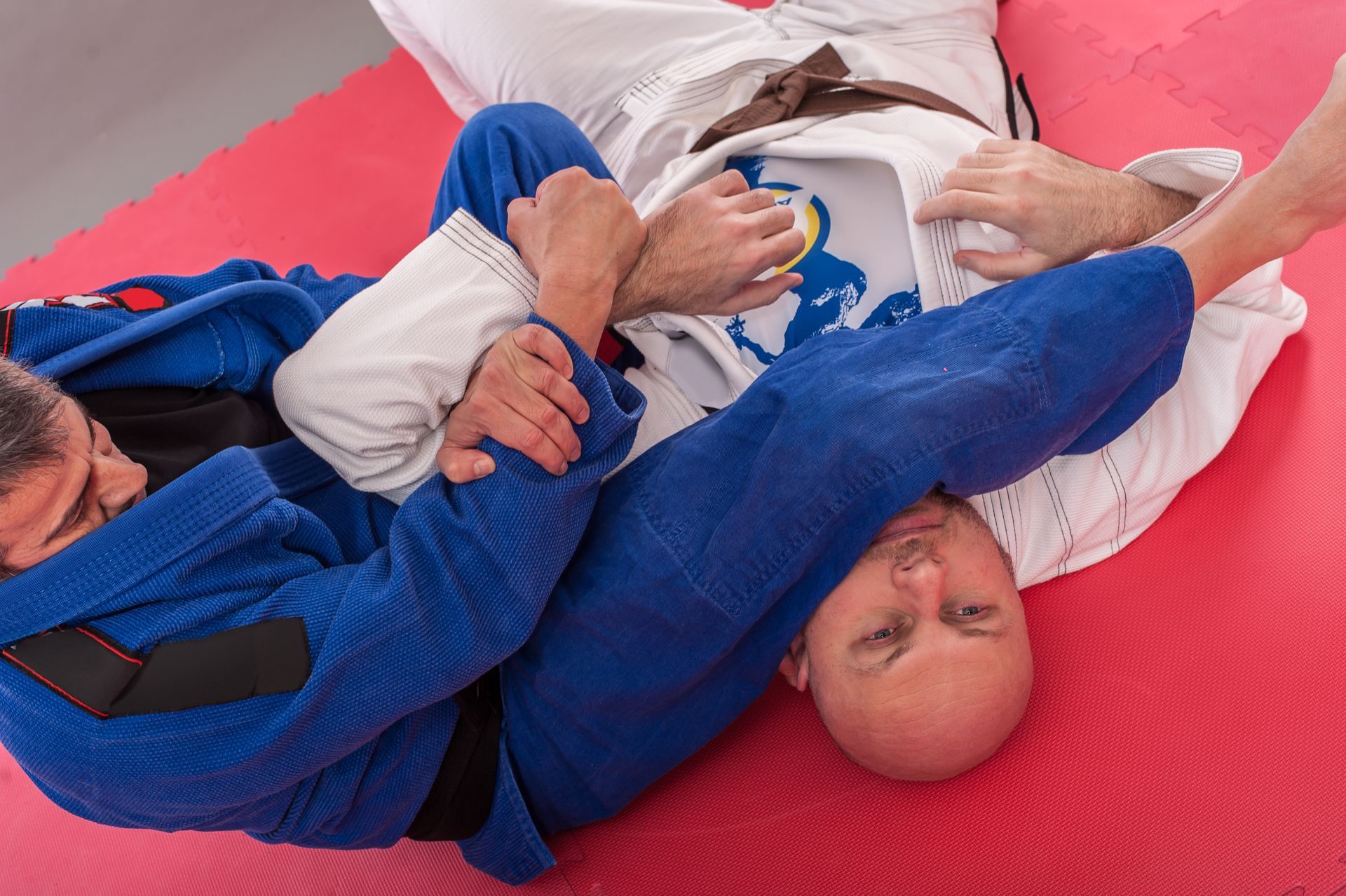Blog
Our Blog

By Roy Cantu
•
20 Feb, 2023
Brazilian Jiu Jitsu (BJJ) is a martial art that is well-suited for children. It teaches self-defense, builds self-confidence, and promotes physical fitness. In this blog post, we will discuss the benefits of children learning Jiu Jitsu and how it can positively impact their development. Physical Fitness One of the primary benefits of children learning Jiu Jitsu is that it promotes physical fitness. Jiu Jitsu is a full-body workout that improves strength, agility, and coordination. Children who participate in Jiu Jitsu classes can develop a lifelong love of fitness and stay active throughout their lives. Self-Defense Another important benefit of children learning Jiu Jitsu is that it teaches self-defense. Jiu Jitsu techniques are designed to allow a smaller person to defend themselves against a larger and stronger opponent. By learning Jiu Jitsu, children can develop the skills and confidence they need to protect themselves in a variety of situations. Self-Confidence Jiu Jitsu can also help children build self-confidence. The martial art teaches children how to overcome challenges and adversity, which can translate to other areas of their lives. As children become more skilled in Jiu Jitsu, they develop a sense of pride and accomplishment, which can improve their self-esteem and confidence. Discipline and Focus Jiu Jitsu requires a high level of discipline and focus, which can be beneficial for children. By participating in Jiu Jitsu classes, children can learn the importance of setting goals, following rules, and staying focused on their objectives. These skills can be useful in other areas of their lives, such as academics and personal relationships. Social Skills Finally, Jiu Jitsu can be an excellent way for children to develop social skills. By participating in classes and training with other children, they can learn how to work as part of a team, communicate effectively, and develop positive relationships. These skills can be valuable for children as they grow and navigate the social dynamics of school and other social settings. In conclusion, children can benefit greatly from learning Jiu Jitsu. The martial art promotes physical fitness, self-defense, self-confidence, discipline, and focus, as well as social skills. If you are considering enrolling your child in Jiu Jitsu classes, be sure to find a reputable instructor who is experienced in working with children. By doing so, you can help your child develop valuable skills and habits that will benefit them for a lifetime.

By Roy Cantu
•
18 Feb, 2023
Brazilian Jiu Jitsu (BJJ) is a martial art that is known for its belt ranking system. BJJ practitioners start as white belts and progress through a series of colored belts, culminating in the black belt. In this blog post, we will discuss what different belts mean in Jiu Jitsu and what it takes to earn them. White Belt The white belt is the first belt in the BJJ ranking system, and it is where all practitioners start. At this stage, the focus is on learning the fundamentals of BJJ, such as basic techniques, positions, and submissions. White belts are expected to attend classes regularly and put in the time and effort to improve their skills. Blue Belt The blue belt is the second belt in the BJJ ranking system and is typically considered the first major milestone in a practitioner's journey. To earn a blue belt, a practitioner must have a solid understanding of the fundamentals of BJJ and be able to apply them effectively in live training. Blue belts are expected to start developing their own game and begin exploring more advanced techniques and strategies. Purple Belt The purple belt is the third belt in the BJJ ranking system and is typically considered the intermediate stage of a practitioner's journey. To earn a purple belt, a practitioner must have a deep understanding of BJJ, be able to apply a wide range of techniques effectively in live training, and be able to adapt to their opponent's game. Purple belts are expected to start developing their own style and begin teaching and helping lower belts. Brown Belt The brown belt is the fourth belt in the BJJ ranking system and is typically considered the advanced stage of a practitioner's journey. To earn a brown belt, a practitioner must have a highly refined understanding of BJJ and be able to apply a wide range of techniques effectively against high-level opponents. Brown belts are expected to be highly proficient in both offensive and defensive techniques and be able to adapt their game to a wide range of opponents. Black Belt The black belt is the highest belt in the BJJ ranking system and is typically considered the pinnacle of a practitioner's journey. To earn a black belt, a practitioner must have a deep and profound understanding of BJJ, be able to apply a wide range of techniques at the highest level, and be able to innovate and contribute to the art. Black belts are expected to be both skilled practitioners and teachers, and to serve as role models and ambassadors for the art. The BJJ ranking system is a symbol of a practitioner's skill and dedication to the art. It is important to remember, however, that belts are not the ultimate goal of training in BJJ. The true goal of BJJ training is to develop a deep and profound understanding of the art, and to use that knowledge to improve oneself and help others. Whether you are a white belt just starting your journey, or a black belt who has been training for decades, the most important thing is to continue learning, growing, and sharing your knowledge with others.

By Roy Cantu
•
15 Feb, 2023
Brazilian Jiu Jitsu (BJJ) is a martial art that has gained immense popularity in recent years. Originally developed in Brazil in the early 20th century, it has now spread across the globe and is enjoyed by people of all ages and backgrounds. In this blog post, we will discuss why BJJ classes are a great option for adults looking to get into shape, learn self-defense, and have fun. What is Brazilian Jiu Jitsu? Brazilian Jiu Jitsu is a grappling-based martial art that focuses on ground fighting and submissions. It is based on the principles of leverage and technique, rather than brute strength, making it an effective self-defense system for people of all sizes and abilities. BJJ classes typically involve learning a variety of techniques, such as takedowns, submissions, and escapes, and then practicing these techniques with a partner. The goal is to improve your skills and ability to defend yourself, as well as your physical fitness, coordination, and mental toughness. Why Take Brazilian Jiu Jitsu Classes? There are many reasons why adults should consider taking Brazilian Jiu Jitsu classes. Here are just a few: Get in Shape - Brazilian Jiu Jitsu is an intense full-body workout that can help you get in shape and improve your fitness levels. It is a great way to build strength, endurance, and flexibility, while also burning calories and improving your cardiovascular health. Learn Self-Defense - Brazilian Jiu Jitsu is a highly effective self-defense system that can give you the skills and confidence to protect yourself in a variety of situations. Whether you are looking to defend yourself against an attacker, or just want to feel more secure in your daily life, BJJ classes can help you achieve your goals. Develop Mental Toughness - Brazilian Jiu Jitsu is not just a physical workout, it is also a mental challenge. Learning and practicing BJJ requires focus, discipline, and perseverance, which can help you develop mental toughness and resilience that can benefit you in all areas of your life. Join a Community - BJJ classes offer a sense of community and belonging that can be hard to find elsewhere. You will be training and learning alongside a group of like-minded individuals who share your passion for martial arts and self-improvement. What to Expect in BJJ Classes If you are new to BJJ, you may be wondering what to expect in class. Here are a few things to keep in mind: Safety First - Safety is a top priority in BJJ classes, and you will be taught proper techniques and safety protocols from the very beginning. You will also be paired with partners who are of a similar skill level and size to ensure that everyone can train safely and effectively. Technical Focus - BJJ is a highly technical martial art, and you can expect to spend a lot of time learning and practicing different techniques. Your instructors will break down each technique step-by-step and provide plenty of opportunities for you to practice with a partner. Partner Drills - A large part of BJJ training involves practicing techniques with a partner. You will be paired with different partners throughout the class, and will have the opportunity to both practice and refine your skills. Rolling - Rolling, or sparring, is a key component of BJJ training. It allows you to apply the techniques you have learned in a live situation, and also helps you develop your timing, reflexes, and decision-making skills. Brazilian Jiu Jitsu classes are a great option for adults looking to improve their fitness, learn self-defense, and have fun. Whether you are a complete beginner or have some martial arts experience, BJJ classes offer a challenging and rewarding training experience that can help you achieve your goals.
